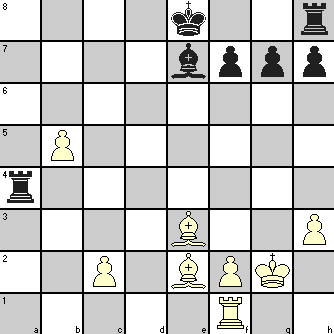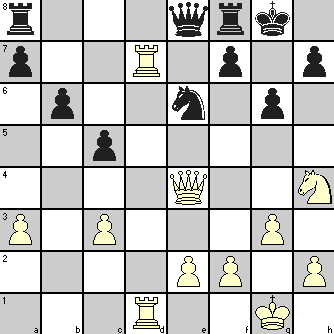Ask any chess player which aspect of chess he/she finds most interesting and it is most likely that chess combinations will have this pride of place! Of course, combinations are nothing but chess tactics of one or more kinds strung together by a series of moves. Why this fascination with chess tactics?
We tried to explore the roles of chess strategy and chess tactics by raising questions on What is chess strategy? Isn’t a chess game all chess tactics?. Here we are trying to examine what lies behind our preoccupation with chess tactics.
Good strategy adds fillip to chess combinations, giving it a direction leading to the ultimate win which is the prime goal of any chess player. But all strategies become meaningful only with the support of appropriate chess tactics. On the other hand, you may be able to produce brilliant combinations without being much aware of the presence or absence of underlying chess strategies.
Also, chess tactics is much more visible than chess strategies. That is why tactical players get much more adulation from the spectators or those who study their games when compared to the positional players. Even the best players fall prey to this temptation and can be seen to go for sacrifices and other tactics to get the win when some prosaic moves could fetch the same result!
All the above may be correct observations but they still do not answer the question on our fascination with combinations. Appreciation of chess-playing public may be an incentive, but not the complete answer. When you are playing with your friend with no one looking, don’t you still look for creating something in the lines of Morphy or Tal? And when you do create one, you will surely like the rest of your world to know about it! Read some other chess blogs and you will know what we mean!
There is part of the answer – ego satisfaction. But this ego is not always a matter of conceit but something much deeper than that, the fulfillment of the superego. It is something akin to the joy of creation felt by anyone in a creative pursuit, be it art, sculpture, literature, music etc. – and I would even like to include sports and games also when some of the top players ultimately compete with themselves to keep raising the bar!
This brings to the fore another aspect – the challenge of it! This is ingrained in our love of puzzles of any kind. But in chess, this puzzle is more refined. Normal puzzles are created by someone and by trying to solve, you are taking up the hidden challenge of the creator. But in chess, complex positions come out of the play without anyone foreseeing it. When these happen, both you and your opponent are trying to find the best way to resolve it. This desire aided by inspiration brings about combinations which give the creator that sweet feeling.
The pleasure of getting recognition is a bonus when some of these chess combinations find their way into chess lore to create wonderment for present and future generations. Chess problems are diverse and so are their solutions, hence there is no dullness of repetition that happens with other types of puzzles. Even where the solution falls into a pattern, the way to it will be different – so every problem and solution appears unique.
The other interesting thing about chess combinations is that they are not the prerogatives of top players unlike in other creative fields where the really good creators climb to the top sooner or later – if not in their lifetime then after it. But the world of chess preserves brilliant combinations which have survived their creators – ordinary players who themselves have passed into obscurity. In Chess Games: Amateurs can also produce gems!, you may read about a case in point.
Accepting that brilliant chess combinations are treated like great works of art by chess aficionados, we will try to show in our next series of articles some chess combinations that we liked in games from lesser known chess masters. We hope you will enjoy those as much as we did!



